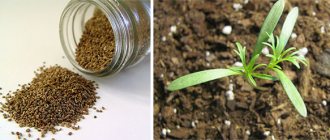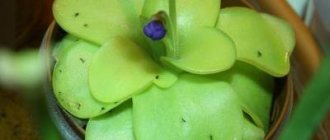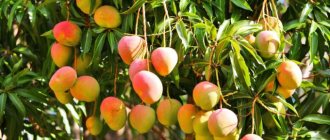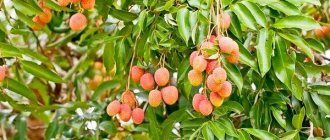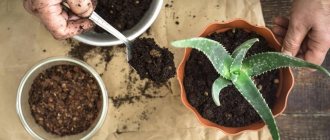Growing a plant from a seed at home is a fascinating and rewarding process.
But, at the same time, this is a painstaking and sometimes very long task. Dear readers!
For you, we have created communities on social networks in which useful articles and interesting ideas are published several times a day! Subscribe and receive useful content in a convenient format! However, the prospect of treating your loved ones to an exotic fruit grown at home is worth it. And strict adherence to growing recommendations will greatly facilitate this process.
Citrus
Photo: pixabay.com Lemons, tangerines, oranges, grapefruits, sweets and pomelo are the simplest fruits that can be grown at home from seeds.
They are sown in pots to a depth of 1 cm in loose soil. The pots should be kept warm at a temperature of about 25 ° C. It is important to keep the soil moist before germination, so it is better to cover the crops with film. Shoots usually appear within a week. As soon as the sprouts hatch, they need to be placed on the brightest windowsill or provided with additional lighting with a phytolamp.
At home, citrus fruits bear fruit well, but the first fruits of the seedlings appear after 10 - 15 years. But even without them, the tree will please you: if it is formed correctly, it will be fluffy. And what’s also nice is that all citruses purify indoor air because they release phytoncides.
Stapelia variegated
The main highlight of the slipway is its variegated yellow-brown flowers, which emit a very unusual aroma. This property must be taken into account when purchasing a plant. The flowers of this succulent smell like rotten meat, thus attracting flies that pollinate the plant. If this feature does not scare you away, then keep in mind that the flower needs to be grown in a well-lit room. Otherwise, the plant is considered unpretentious, since it does not require large amounts of water, a certain temperature or soil. The main thing is to turn the pot in time so that the light falls on all sides of the slipway and the flower develops harmoniously.
Persimmon
Photo: pixabay.com
Persimmon does not get sick and requires virtually no care (1). But this is in open ground. But growing it at home is more difficult: it will need cool conditions in winter.
The fruits must be ripe, otherwise the seeds will not sprout. And in stores they often sell unripe ones, since they last longer. To bring the fruit to ripeness, place the fruit in a bag along with a banana or apple: they release ethylene, which speeds up the ripening of persimmons. You cannot freeze persimmons: the seeds from such fruits will not sprout.
Keep the extracted seeds for two days in a weak solution of potassium permanganate. Then carry out warm stratification - keep it at a temperature of 50 ° C for 2 months (for example, you can put it on a battery). Before sowing the seeds, it is necessary to file down the hard ribs with sandpaper.
Persimmon seeds are planted to a depth of 1.5 cm in a pot with loose soil - it is better to use a mixture of sand and peat in a 1:1 ratio. Since persimmon is a deciduous tree, in winter (from the second year of life) it requires cool keeping at a temperature of 5 - 10 ° C. You can put the pot with the plant in the cellar or put it in the refrigerator (the plant does not need light during the dormant period).
Persimmons grown from seeds begin to bear fruit at 5–7 years.
Pitaya (fruiting cactus)
This is a cactus that produces edible fruits that also have a very pleasant taste. Pitaya is easy to maintain. Any soil rich in organic matter is suitable, including peat soils. It grows very quickly, so constant feeding is necessary. In winter, the cactus can be kept cool, down to 0 degrees, but it is better not to water it at all at this time. In summer, watering is also not very abundant, as the soil dries out by 1 centimeter.
Pitaya propagates by seeds and cuttings. Plants begin to bear fruit at different ages. Some for 2-3 years of life. Other sources indicate that the length of the plant for fruiting must be at least 1.5 meters.
The plant must be formed around a bamboo stick to which the shoots are tied. Over time, they will get stronger and be able to support themselves. In addition, the shoots can grow together.
Cactus fruits come with red and yellow skin, the size of a large apple, and are covered with large scales. The pulp is sweet or sweet and sour, with a herbaceous smell and an abundance of edible seeds. Reminds me of the consistency of kiwi.
These are the exotic guests that can settle on your windowsill. Believe that you have the power to turn your home into a Garden of Eden!
Lychee
Photo: pixabay.com
This tree can also be grown at home, and without any extra tricks.
Lychee seeds extracted from the fruit lose their viability within 4 to 5 days, so they need to be sown as quickly as possible. The seed is embedded in loose soil to a depth of 2 cm. Until shoots appear, soil moisture should be high. And the temperature too – within 25 – 34 °C. Sprouts usually appear within 1 - 4 weeks, but sometimes it takes longer. The first leaves of lychee are reddish in color. As soon as they appear, the pot should be placed in a bright place.
At first, lychee grows quickly, in just a few weeks the seedlings reach a height of 20 cm. But then growth slows down: in the first 2 years, the seedling barely reaches 30 cm. This is also the norm, the plant is actively growing roots.
Lychee from the seed begins to bear fruit at 8–10 years of age (2).
Exotic flowering indoor plants
Exotic flowers grown at home, although they do not carry any benefits like fruits, are capable of performing an aesthetic function, i.e. delight their owners with their beauty.
Tillandsia
This is an exotic plant that can bloom from several days to two months, and most often in the summer.
Tillandsia needs indirect light. She doesn't like extreme heat. Therefore, in summer it is better to place it in the shade. And in winter she needs lighting.
In summer, high humidity is needed (about 70%). In pots, the soil should be moist; drying out is not allowed. In winter, watering can be reduced to allow the soil to dry out a little. Spray the plant regularly. Moisture should not get on the stipules.
For watering, use soft water (no distilled or tap water).
In summer, a temperature of 20-28 degrees is suitable for her, and in winter - 18-25 degrees.
Passionflower
Today you can often see passion fruit in stores. They are the fruits of passionflower (this is a large vine with amazingly beautiful flowers).
They love warmth, bright light, and nutritious soil.
These indoor plants can grow well in the northern part of the apartment, but then they will not have flowers due to lack of light.
Passionflower grows quickly, it needs space and good support. If you create conditions suitable for it, then after a couple of years, most often by the beginning of autumn, the plant will begin to bloom. In the same year, rooted cuttings, which were obtained from thriving passionflower, bloom.
Orchid
A very famous and popular exotic flower for growing at home.
You need to place a long stick in the pot as a support and add special soil.
In summer, do not place in direct sunlight, the light should be diffused. In winter and autumn, when it gets dark outside the window early, you need to provide special lighting so that the buds bloom and the leaves do not turn yellow.
- The apartment should be warm, no air conditioning or drafts.
- You need to water when the top layer of soil is slightly dry to the touch. Doesn't like heavy watering.
- The orchid needs to be replanted once every two years. It should be carefully removed from the pot and shake off excess lumps of soil, then planted in a larger pot with moistened soil.
So, exotic plants for the home can decorate our apartment and delight us with their beauty. And to admire them, you don’t have to go to the store or look at them in the picture. Growing plants from exotic countries will not be a very difficult procedure, you just need to follow all the rules of care.
Mango
Photo: pixabay.com
Growing a mango from a seed is not an easy task, but it is exciting. Seeds from ripe fruits are suitable for germination. Determining the degree of ripeness of a mango is simple: if the pulp separates easily from the seed, the fruit is ripe. The removed bone should be washed thoroughly and the remaining pulp should be scraped off with a knife. And then it needs to be... split. Yes, yes, just split it, since a whole seed most likely will not germinate. Inside the seed there will be an embryo with a green sprout.
Mango is a fairly large tree, so it is better to plant the sprout immediately in a large pot. A universal primer from the store will do. The seedling is planted horizontally, so that approximately 1/4 of the seed remains above the soil surface. After this, the pot is covered with film and placed on a warm, light windowsill. Once every 2–3 days, slightly raise the edges of the shelter to ventilate and prevent the pit from rotting. After about 2 - 3 weeks, the first shoots will appear.
Mangoes begin to bloom and bear fruit at home at 6–7 years of age.
Growing kiwi from seeds
It will take some effort to extract kiwi seeds. You should use a spoon to scrape out the core with small black seeds, and then rinse it without losing the little things you have extracted. This is the most difficult stage when sowing kiwi. The seeds of ripe fruits then germinate well and quickly. The main thing is not to bury them too deeply; it is enough to sprinkle 1-2 mm of substrate on top. Chinese actinidia (Actinidia chinensis) or delicious actinidia (Actinidia deliciosa) will grow, close relatives of which successfully bear fruit in the gardens of central Russia.
Kiwi seedlings
Read more: How to get a kiwi harvest in the middle zone
passion fruit
Photo: pixabay.com
Perhaps not everyone knows, but passion fruit is the fruit of the edible passionflower. This is a vine that not only bears fruit, but also blooms very beautifully. So at home it will become a real window decoration. But it is important to remember that passionflower is a very powerful vine and will need pruning at home, otherwise it will take up all the space available to it (3).
Seeds are sown in separate high pots. It is important to place drainage (expanded clay, crushed stone, brick chips) at least 2.5 cm high at the bottom. The soil for germination must be both loose and breathable (leaf humus, compost, sand, turf soil).
The seeds are first scarified - lightly rubbed with sandpaper. Then they are treated with any growth stimulant. Sow to a depth of 1 cm. Cover the pot with film. The optimal temperature for emergence of seedlings is 20 - 25 ° C, humidity - 75%. Shoots appear after 30 days or more. As soon as they appear, the film is removed.
Date fruit
Most often, date pits are thrown away, but in vain. After all, you can grow small palm trees from them that will look good in any interior. However, you will not see the results of your work immediately. The seedling usually appears no earlier than a month later, and the plant itself will add about 5 cm annually. Serious care is not needed, just provide regular bright light and moderate watering.
Pitahaya
Photo: pixabay.com
The exotic pitahaya fruit is a large climbing or creeping forest cactus (Hylocereus) without thorns. Its flowers are large and fragrant. They bloom at night.
Pitahaya seeds are sown in separate pots to a depth of 0.5 cm. To prevent the soil from drying out, it is better to cover the pot with film.
Hylocereus can be grown in the shade - in nature it grows in forests, where it can do without an abundance of sun.
It begins to bear fruit at 5–7 years.
Pomegranate
Pomegranate seeds germinate no worse than citrus seeds. In nature, the plant is found in a more modest size compared to lemons, grapefruits, and oranges. Seedlings are much easier to form: they can be grown as shrubs or as a multi-stemmed tree.
Pomegranates begin to bloom earlier than citrus fruits, in the 3rd or 4th year. A characteristic feature is flowers of three types: female, male or bisexual. However, growing the fruit requires strict conditions.
Avocado
Photo: pixabay.com
The germination rate of avocado seeds is 100%, but provided that they are collected from ripe fruits. To check for ripeness, press the fruit with your palms on both sides, then release. A ripened avocado will restore its structure.
Seeds should be planted on the day of collection. It is usually recommended to pierce them in 3 places with toothpicks and immerse them in water a third, but this requires skill, and you will have to constantly monitor the water level. So don’t worry: avocado seeds germinate well in the soil; just bury them 1/3 of the way down into loose soil. And water once a week.
Avocados do not like stagnation of water in the roots, so be sure to put 2 cm high drainage at the bottom of the pot. As soon as the seedling appears, place the pot on the brightest windowsill.
The first fruits are produced in 3–5 years.
Pepino
This plant is truly unique - it looks like a pear, but tastes like melon. To grow a new plant yourself, you need to remove the seeds from a ripe fruit and place them in a small container. Cover the seeds with soaked toilet paper and cover with plastic wrap. Leave in a dark room, but do not forget to moisten with a spray bottle every three days.
The optimal temperature for growing pepino is +25 °C. After the seeds hatch, the container must be moved to a place with good lighting until the cotyledons appear. Then the seedlings are picked and transplanted into the soil.
Popular questions and answers
We talked about growing exotic fruit crops with agronomist-breeder Svetlana Mikhailova.
Will exotic fruits bear fruit at home?
If the plants are provided with proper care, they will. But you need to be patient - most fruit trees bloom in 10 - 15 years.
Where to keep exotic fruit plants at home?
Most tropical fruit plants are light-loving, so southern or eastern windows are suitable for them. But even in this case, from October to April they will need additional illumination with phytolamps for 12 hours a day.
Is it possible to grow exotic fruit plants in open ground?
All of them are heat-loving, so some of them, for example, citrus fruits, persimmons and passion fruits, can only be grown in open ground on the Black Sea coast.
In the middle zone, and even more so in the Urals or Siberia in open ground, they will die. But these plants can and even be usefully taken out into the garden in pots in the summer. And bring it back into the house for the winter. Sources
- Smirnov A.V. World of plants. Stories about cultivated plants // M.: Young Guard, 1988 – 303 p.
- Baranov V.D., Ustimenko G.V. World of cultivated plants. Directory / M.: Mysl, 1994 – 381 p.
- Dr. Hessayon D.G. All about indoor plants // M.: Kladez-Buks, 2002 – 256 p.
How to grow feijoa from seeds
Feijoa seeds will have to be obtained in the same way as kiwi. From them grows acca (Acca sellowiana), which belongs to the Myrtaceae family. When simultaneously sowing seeds taken from the feijoa fruit and purchased seeds of metrosideros, also belonging to this family, the former demonstrated better germination, growth rates, visual attractiveness and the will to live. In nature, acca grows up to 4 meters in height. In indoor conditions, it lends itself well to formation; it blooms more readily than myrtle, but, unfortunately, it has problems with organizing wintering that are common to all myrtaceae.
Feijoa fruit
Crassula Umbella
Due to the unusual shape of the leaves, Crassula is also called the “wine cup”. When choosing a place for this flower, keep in mind that it is more comfortable in soft lighting. However, a well-lit windowsill will also work. Crassula needs to be watered infrequently, since the plant is a succulent and does not tolerate waterlogged soil. The main thing is not to forget to wipe off the dust from the leaves of the flower.
Lithops
This is another member of the succulent family that has a very unusual appearance. Lithops looks like a small pebble that has been cracked in half. If the plant is properly cared for, a flower appears between its two halves. Like all cacti, lithops needs well-drained soil and scanty watering, which almost completely stops in winter. The main thing is to provide the flower with a well-lit and ventilated space.
